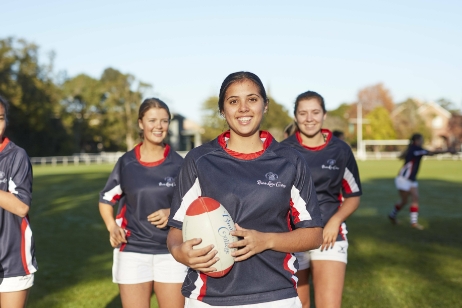
A decade ago paediatricians noticed a worrying trend: children’s mental health was beginning to decline. Anxiety disorders, depression and loneliness had suddenly become more common among teenagers around the world.
Health experts and researchers didn’t know exactly why that happened. Some said that these were simply statistical variations without any particular cause. Others believed there must be something new in children’s lives that explains those negative trends in wellbeing and health.
Recently, it is not just children’s wellbeing and health that have been at risk. Teachers and parents have realised that even when children try harder and spend more time in school, overall learning outcomes have begun to slip during the last decade.
Learning in school is jeopardy, too, not only here in Australia but everywhere.
Here is the hard question of our time: what role do digital media and technologies play in explaining the downward trends in children’s wellbeing and learning?
Growing Up Digital Australia
Make no mistake, there is a lot of research done and more underway about that question.
But because real experiments, or randomised controlled trials, are difficult in practice to test the causal link between children’s use of smartphones or social media, experts often turn to other ways to find answers.
What do children do in their spare time? Here’s the thing. One third of preschool children have daily access to digital gadgets, and two thirds of primary schoolers have their own smartphone. Almost all teenagers carry a smartphone with them.
These were some of the findings in Growing Up Digital Australia (2020), which aimed to understand the scope of physical, mental and social consequences of digital media and technologies on children and youth.
It is not uncommon that children spend 6 to 8 hours on digital screens every day. Based on the key findings of this study, we found that 5 in 6 parents and teachers thought that digital media and technologies were a growing distraction in children’s lives.
Over 90 per cent of primary and secondary school teachers believed that in last five years the number of students with emotional, social and behavioural challenges had increased.
Not surprisingly, 60 per cent of teachers had observed a decline in students’ overall readiness to learn.
Keeping smartphones away from schools
During this emerging crisis, many governments have issued blanket bans on smartphones in primary and secondary schools. First France and Sweden, then numerous other countries.
Most Australian states and territories have now banned, or are planning to ban, smartphones on school grounds.
When students keep their digital gadgets turned off or in lockers during school days, the quality of teaching and learning probably improves. But this remains a controversial issue, some experts argue, because students need to learn to value and manage their digital wellness to improve it in school and outside of it.
Digital wellness — which means responsible and healthy relationships with technology — is part of overall student wellbeing and is an essential 21st-century skill.
It encompasses such things as balancing between using and turning off devices; understanding opportunities and ethical responsibilities linked to technology; and building self-regulation to enhance safe use of digital gadgets.
Some children are taught knowledge and skills necessary for digital wellness at home. Most parents, however, find it difficult and would welcome more support from school to help them support their children in building digital wellness at home.
If children don’t learn this at home and if they can’t practise it in school, many children are left to their own devices to navigate in risky waters of the digital world.
There is more to it. Failure to value digital wellness may put educational equity further at risk and widen “the new digital divide” among young people.
Because practically all children have access to the Internet, “the new digital divide” is the gap between children whose parents understand that they must limit screen time and those whose parents have fewer or no opportunities to do so.
For example, in our study we found that 1 in 3 parents, on average, allowed their children to use digital devices every night after bedtime. But in lower-income families, this increased to almost 1 in 2.
Moreover, 60 per cent of children who are struggling in school go to bed every night with their digital device.
What does this mean for me?
There is no one simple answer to a complex human challenge. Children are different from one another, and the digital habits in families are not similar.
Schools can implement the newly issued restrictions to mobile phone use in schools in their own ways.
A blanket ban on using digital devices during school days or at home may look like an effective and easy solution to address the challenges that may be caused by them.
But as it is in life, unintended side effects always occur. So here are three things consider.
1. Build shared responsibilities
The best solution to a complex behavioural and social problem is not to blame the technologies or try to prohibit them.
Instead, a more effective way is to invest in purposeful education about how to use and live with digital technologies safely and responsibly.
Our study showed that parents often look to school for support in doing this. Similarly, most teachers hoped that children would get more support to develop more productive digital lifestyles at home.
Most adults think families and schools share an equal responsibility in helping a child to develop the skills and habits of digital wellness to grow up in a digital world.
2. Understand children’s perspectives
Whatever the solutions regarding how digital media and technologies should be used in schools and at home, it is important to involve children’s perspectives.
Children often have very different relationships with their gadgets and everything that come with them than we as adults do.
It is true that young children are not able to self-regulate well enough to put necessary limits to using digital media and technologies. It is our role as parents and teachers to do so.
Nevertheless, constructive conversations with children about better digital wellness is a good way to utilise the benefits of digital devices while at the same time understanding the risks related to having too much of them.
3. Proceed until apprehended
Every so often there is a complex challenge where the surrounding facts are contested. Many believe the role digital media and technologies play in children’s wellbeing and learning today is one such question.
The US Surgeon General recently called for urgent action “to create safe and healthy digital environments that minimize harm and safeguard children’s and adolescents’ mental health and well-being during critical stages of development.”
The Australian Government’s eSafety Commissioner underlines that Australian young people are calling for more online safety education, tools and resources that directly address the key issues they face online.
These official calls to action suggest that now is not the time to sit around and wait for further evidence, instructions or policy to tell us what to do.
It is evident now more than ever that digital media and technologies are powerful tools that help us communicate, work and learn more effectively. The recent global pandemic is concrete proof of this.
But these and other benefits brought by digital devices in our lives often come with potential risks and harmful side effects if not handled with care.
Now, when many children can’t have access to their mobile digital gadgets in school, it is important that we don’t leave children to their own devices after the school bells rings at the end of the day.
They, and all of us, need to put safety and wellbeing before anything else.



